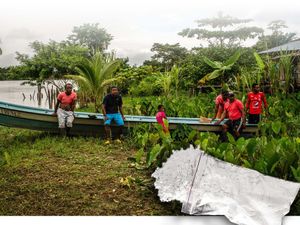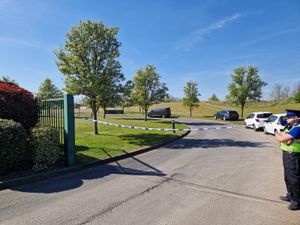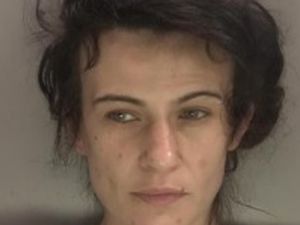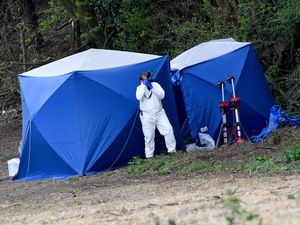Drugs wars: ‘People learn if they see or hear, they don’t talk’
In Colombia, villagers are often caught up in the deadly drugs trade fight. A war fuelled by cocaine use across the West Midlands. Here, they tell the Express & Star their fears...

It was a bloody massacre which sent shock waves through the riverside communities living deep in the Colombian rainforest.
Five men in a boat gunned to death on the river San Juan shortly after waving off their wives to a women’s festival in a small town called Carrá.
The murdered bodies were discovered strewn over the riverbank along with a black and red flag of rebel group National Liberation Army – the ELN.
“We don’t know why it was carried out, we don’t understand – but it devastated everyone here,” said fisherman John Mosquera, who found the dead.
The deaths were investigated by group Human Rights Watch, but no conclusion was ever reached over who committed the massacre.
It is one of many accounts inside the Valle del Cauca region of western Colombia I come across of killings and mysterious disappearances.
This is a violent area where a brutal conflict has been played for many years, fuelled by cocaine trafficking and a battle to control land on which the coca leaf is grown.
The sole victims are the communities who find themselves living on the battleground. Mr Mosquera said: “There is a new paramilitary group in the area. Maybe they [ELN] wanted to send a message to people not to join that group. Maybe they wanted to warn us?.”
He is speaking to me from inside a darkened side room in a blue and white school house in a small village, 20 miles downriver from Carrá on the San Juan, called Cabacera.
Alongside him is Siode Arboleda, aged 35, the sister of two of the murdered men, Elcias and Didier Arboleda. Tears in her eyes, she also has no idea why the men were killed.
But the mother-of-five, like people in Cabecera, where she is staying, know what fuels the presence of armed groups in their region.
Dagoberto Pretel, a leader of the village of a few thousand people, said: “If the foreigner stopped using drugs, Colombia would not be producing so much and it would not be big business. If it stopped we would not have these problems.”
He sits in a circle of 50 villagers to welcome me. Rain starts to fall on the tin roof above us, but there is at least optimism here.
They only returned to their homes in April after fleeing in March last year on a morning tribe leaders had been woken by machine-gun fire as forces from the Government and ELN fought nearby.
Today, however, they are hoping for peace. They have created a humanitarian zone supported by charity Christian Aid which bans armed groups from the community.
As part of a ceremony a banner is unveiled and members all stand around holding it while a prayer is read out.
Mr Pretel, who oversaw the community’s temporary residence in city Buenaventura, said: “Before we came back we faced threats, we were told if we came back our lives would be at risk. Our homes were looted. But since we have come back here we have not been threatened. We are aware there is an armed presence. This is our home and we must try.”
It has been a long journey to reach this village outpost in the heart of Colombia.
Having flown to the capital Bogota, I got on on a small plane to Buenaventura and landed on the palm tree-lined runway of the seaport city, once known as the most violent city in South America.
At the height of the civil war, which officially came to an end two years ago, arms and legs from murdered people’s bodies could be seen in the muddy shoreline when the tide went out.
But on my arrival I see more misery than fighting. Father Alberto Franco, leader of the Inter-church Commission on Justice and Peace, has spent more than 30 years helping communities displaced from their lands by traffickers. He sees the flow of drugs down the river San Juan, one of the main drug trafficking corridors in the country, and the blind eye turned by army posts put in place to halt the movement of drugs.
He said: “With the level of violence people have learned if they see or they hear, they don’t talk. There is a deep seat of corruption involving public servants and the state which leads to a collaboration with armed paramilitary groups and drug traffickers. The result is more land for cultivation is being seized from communities who face a series of threats, intimidation and killings. When there is war and chaos, then the movement of drugs is possible.”
A peace accord two years ago led to Marxist revolutionary group Revolutionary Armed Force of Colombia (FARC) lay down its weapons, ending a 50-year war which had left 220,000 people dead and nearly six million displaced. But many armed groups still remain.
They include the military, paramilitaries, the police, the ELN and a rising number of dissident FARC groups. Demand for cocaine worldwide – including the UK – is growing, and as a result so is the land to grow the coca leaves.
Flavio Opua, chief of the Wounan tribe, a community now displaced from their lands and living in a former school in Buenaventura, is scared to return home, claiming their territory is now used by coca leaf growers. When I ask him what message he would like to send to people in the UK, he says: “People need to know the impact the violence is having on groups such as ours, they need to realise what is happening to us and the damage cocaine is causing.”
Back out on the river San Juan I see communities living in fear along the banks. Father Franco said: “The drugs come from up the river, down in boats, and nothing is done to stop them.
“I know it gets placed onto ships at the coast where it is taken to America and onto Europe. We hear of it going as part of banana shipments.
“People need to know the dark consequences of using cocaine.”
From Colombia to the Black Country – the journey of cocaine from the source to our streets, see tomorrow's Weekend.



